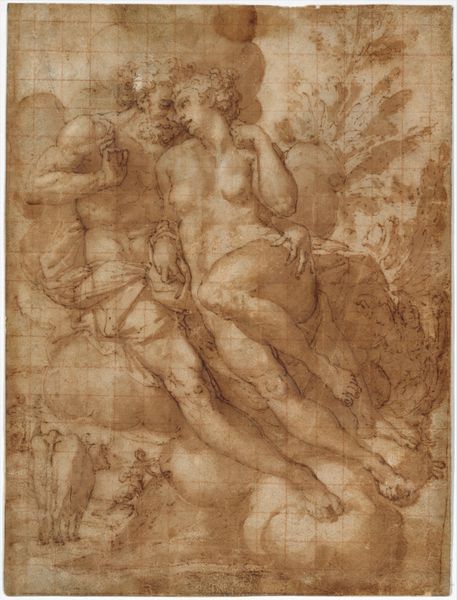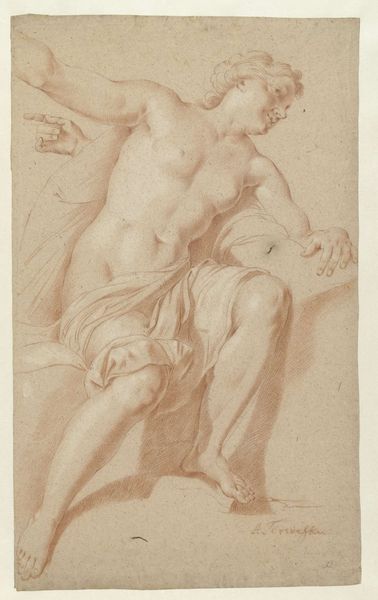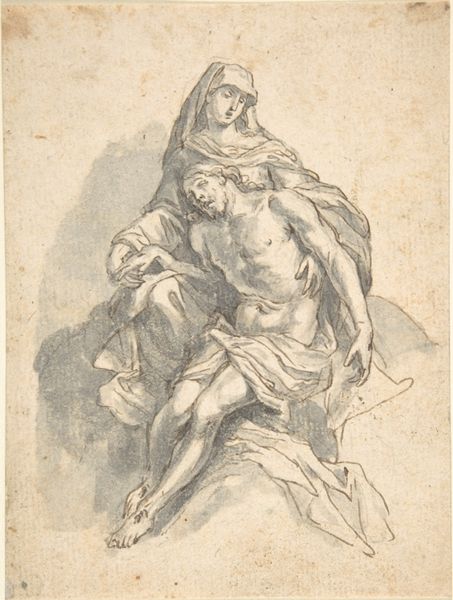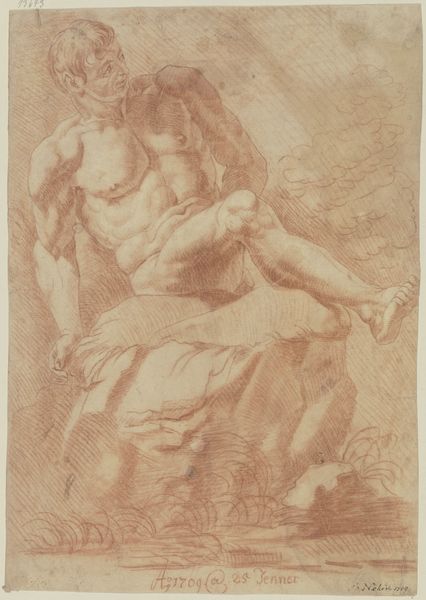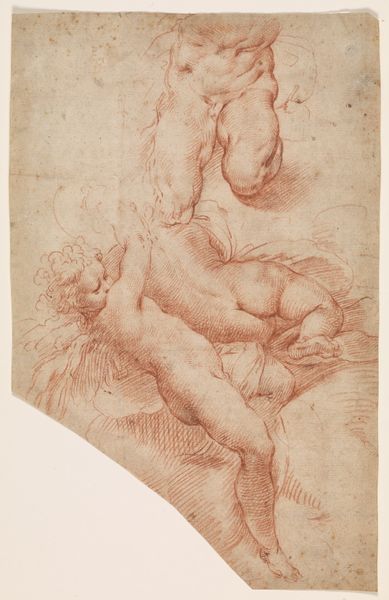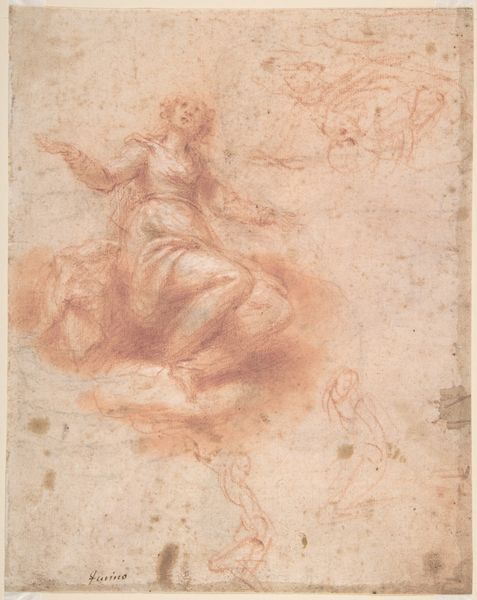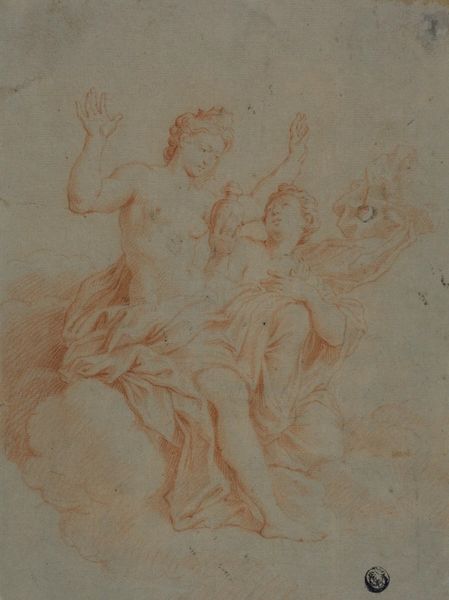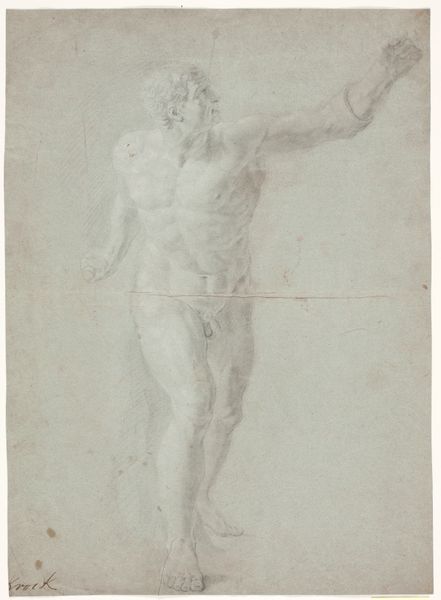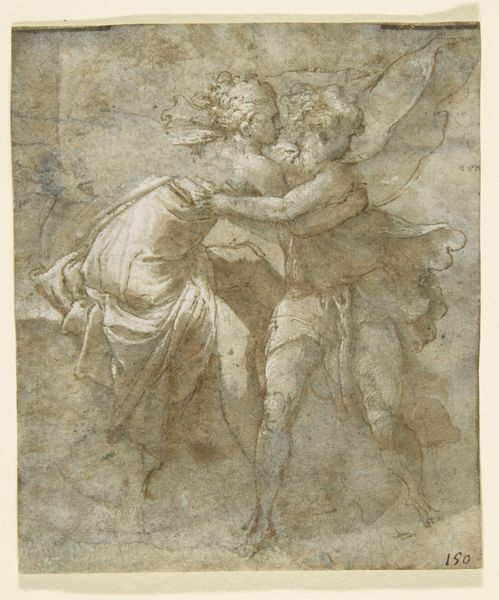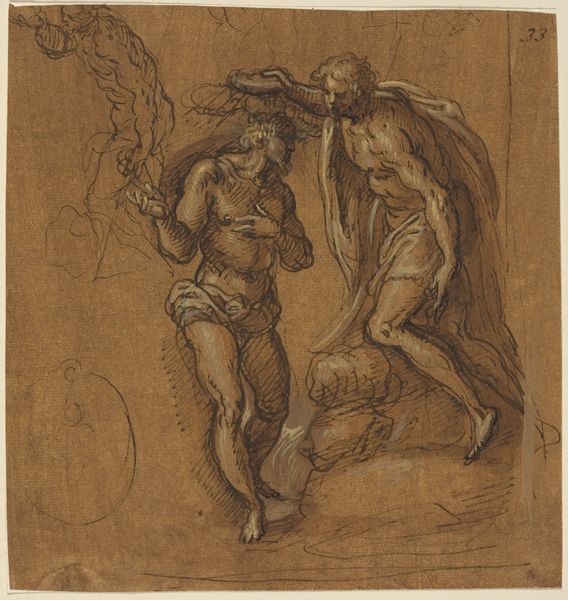
drawing
#
drawing
#
allegory
#
baroque
#
nude
Dimensions: overall: 32.9 x 24.1 cm (12 15/16 x 9 1/2 in.)
Copyright: National Gallery of Art: CC0 1.0
Curator: This drawing, rendered in sanguine chalk, captures a scene brimming with mythological mischief. We're looking at "Cupid Stealing Venus's Floral Crown," created by Antoine Coypel sometime between 1705 and 1708. Editor: It's a compelling image. My first impression is one of effortless grace; Venus seems to float on the page. The use of line is so economical, yet the forms are rendered with surprising weight. The support is a blue laid paper which contributes significantly to the overall aesthetic effect. Curator: Indeed. Coypel, from a family steeped in artistic production, displays remarkable control here. Considering that it is just chalk on paper, it is evident this served, primarily, a functional purpose. This wasn’t about lavishness or longevity. But consider the cultural impact: depictions of classical myths, like this one, played a vital role in shaping perceptions of beauty and desire during the Baroque era. Editor: Absolutely. We see Cupid, a symbol of impish, uncontrollable desire, quite literally pilfering from Venus, the goddess of beauty and love. The act itself—theft—imbues love with a sense of transgression. The crown, floral and suggestive of nature's beauty, emphasizes the potent symbolism inherent in flowers through history as allegorical metaphors. Curator: The floral crown also signals her dominion, right? To steal the crown is to destabilize power structures, an apt metaphor perhaps, considering Cupid disrupts conventional order! Editor: It becomes a psychological exploration as much as a representation of mythology, which adds a layer of richness to it. Consider also how Coypel frames it within art's cultural lineage; it invites you to think about classical forms, translated anew. What's also noteworthy, it should be added, is the quick manner in which it must have been executed. It does indeed point to an immediate function related to teaching, studio demonstration, or preliminary sketch towards other endeavors. Curator: And that immediacy speaks volumes about the artistic practice of the time. Such an informal format might not even have been intended for grand display at all. A work like this illuminates not only Baroque aesthetics but offers also insights into studio practice. Editor: Right, examining that contrast between a preliminary rendering and its deeper symbolism shows us just how potent images can be. The themes in "Cupid Stealing Venus’s Floral Crown," reverberate powerfully through cultural history even as it remains grounded to paper.
Comments
No comments
Be the first to comment and join the conversation on the ultimate creative platform.
